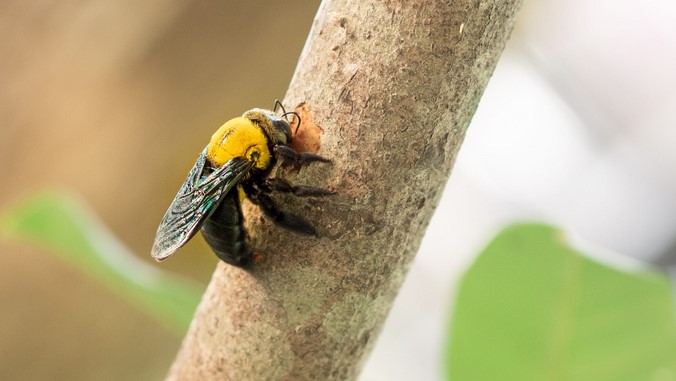
Carpenter bee stings can be painful and cause a variety of symptoms. It is important to be able to identify a carpenter bee sting and to know how to treat it. This article will provide information on carpenter bee sting identification, symptoms, and treatment. It will also discuss the importance of seeking medical attention if the symptoms worsen or persist. By understanding the signs and symptoms of a carpenter bee sting, you can take the necessary steps to ensure your safety and well-being.
Identifying a Carpenter Bee Sting: Symptoms and Warning Signs
Carpenter bee stings can be painful and cause a variety of symptoms. It is important to be aware of the warning signs of a carpenter bee sting in order to seek medical attention if necessary.
The most common symptom of a carpenter bee sting is a sharp, burning pain at the site of the sting. This pain may last for several minutes and can be accompanied by swelling, redness, and itching. In some cases, the area may become tender and warm to the touch.
Other symptoms of a carpenter bee sting may include nausea, vomiting, dizziness, and difficulty breathing. In rare cases, an allergic reaction may occur, which can be life-threatening. Symptoms of an allergic reaction include hives, swelling of the face or throat, difficulty breathing, and a rapid heartbeat.
If you experience any of these symptoms after being stung by a carpenter bee, seek medical attention immediately. It is also important to be aware of the warning signs of a carpenter bee sting, such as a buzzing sound or a bee hovering around you. If you notice any of these signs, move away from the area and seek medical attention if necessary.
By being aware of the symptoms and warning signs of a carpenter bee sting, you can take the necessary steps to protect yourself and seek medical attention if necessary.
Treating a Carpenter Bee Sting: Home Remedies and Medical Options
Carpenter bees are large, black and yellow bees that are commonly found in North America. While they are not aggressive, they can sting if they feel threatened. If you are stung by a carpenter bee, it is important to take the proper steps to treat the sting and reduce the risk of infection.
Home Remedies
If you are stung by a carpenter bee, the first step is to remove the stinger. Use a pair of tweezers to carefully remove the stinger from the skin. Once the stinger is removed, wash the area with soap and water.
To reduce the pain and swelling, apply a cold compress or ice pack to the area. This will help to reduce the inflammation and pain. You can also take an over-the-counter antihistamine to reduce the itching and swelling.
Medical Options
If the pain and swelling persists, it is important to seek medical attention. Your doctor may prescribe a topical steroid cream or oral antihistamine to reduce the inflammation and itching.
In some cases, the sting may cause an allergic reaction. If you experience any of the following symptoms, seek medical attention immediately: difficulty breathing, hives, swelling of the face or throat, dizziness, or nausea.
In conclusion, if you are stung by a carpenter bee, it is important to take the proper steps to treat the sting and reduce the risk of infection. Home remedies such as cold compresses and antihistamines can help to reduce the pain and swelling. If the symptoms persist, seek medical attention.
Conclusion
In conclusion, Carpenter Bee stings can be painful and cause a variety of symptoms. It is important to identify the type of bee that stung you and seek medical attention if necessary. Treatment for Carpenter Bee stings includes applying a cold compress, taking antihistamines, and using topical creams or ointments. If the sting is severe, seek medical attention immediately.